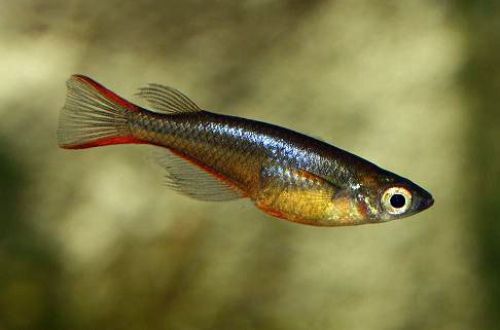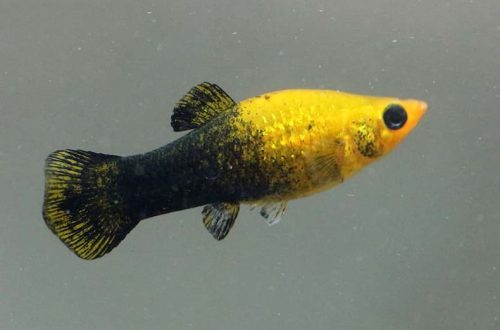
i'a araisa
The Asian ricefish, scientific name Oryzias asinua, belongs to the Adrianichthyidae family. Belongs to the group of Killy Fish, also known as carps. A close relative of the Japanese Orizia and has the same qualities – unpretentiousness, ease of maintenance, good compatibility with other species. May be recommended for beginner aquarists.

Mataupu
Nofoaga
Native to Southeast Asia, found exclusively in the river systems of Sulawesi Island in Indonesia. They inhabit floodplains, swamps, are widespread in rice fields (as you know, rice grows in water). They prefer shallow, well-warmed areas of reservoirs with slow flow or stagnant water. The habitat is characterized by silty substrates and an abundance of aquatic vegetation.
Fa'amatalaga puupuu:
- Ole tele ole pusa tioata - mai le 40 lita.
- Vevela – 23-26°C
- Tau pH - 5.0-7.0
- Vai malo – vaivai (2-10 dGH)
- Ituaiga palapala – oneone pogisa
- Malamalama – fa'ato'ilaloina
- Suavai pa'epa'e - leai
- E vaivai le vai
- Ole lapo'a ole i'a e o'o ile 3 cm.
- Mea'ai - so'o se mea'ai
- Amioga – to'afilemu a'oga i'a
faʻamatalaga
Adult individuals reach a length of up to 3 cm. The color is predominantly gray with a pink tint, the tails are red. Depending on the angle of incidence of light, the scales may give off a blue sheen. Males are more colorful, have elongated dorsal and anal fins. Females, in turn, look larger and not so bright.
Kuka / Gasesega
Fish undemanding to the diet. In a home aquarium, it will accept most dry foods (flakes, pellets, etc.). You can diversify your diet with live or frozen foods, for example. Small bloodworms, brine shrimp, daphnia. Important – food particles must be small so that the Asian rice fish can eat them.
Tausia ma le tausiga, faʻatulagaina o le pusa tioata
The modest size of adult fish allows them to be kept in small aquariums and even in an ordinary three-liter jar. Nevertheless, a tank of 20-40 liters is still preferable. The design uses dark soil, areas with dense vegetation and shelters in the form of intertwined snags. The lighting is subdued, plants floating on the surface can serve as an additional means of shading. In such conditions, the fish show their best coloration, as it resembles their natural habitat.
Ensuring high water quality is crucial when keeping any kind of fish, so the aquarium is equipped with a productive filtration system and regular maintenance procedures are carried out. At a minimum, it is worth regularly removing organic waste, cleaning decorative elements from plaque and replacing part of the water (15–20% of the volume) with fresh water on a weekly basis. When choosing a filter, you should give preference to models that do not cause excessive movement of water during their work. As mentioned above, the Ricefish prefer stagnant water.
Amioga ma Fegalegaleaiga
Peaceful schooling fish, but at the same time they feel quite great one by one. Compatible with other non-aggressive species of comparable size that can live in similar conditions.
Fa'ama'i i'a
E ta'ua o se ituaiga e malosi ma e le fa'amaonia. I totonu o se meaola fa'anatura paleni o le aquarium, e seasea tupu mai fa'ama'i. Faʻafitauli e mafai ona tulaʻi mai ma se faʻaleagaina tele i tulaga o le taofia, faʻatasi ma le faʻafesoʻotaʻi ma iʻa ua mamaʻi, ma isi. Mo nisi faʻamatalaga i faʻamaoniga ma metotia o togafitiga, vaʻai le vaega "Maʻi o iʻa aquarium".




